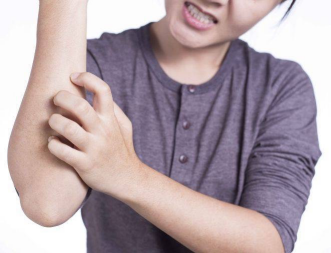東京で信頼できる警備会社をお探しなら|安心・安全のセキュリティサービス
Understanding HIV Rash: Causes, Symptoms, and Treatment
HIV (Human Immunodeficiency Virus) weakens the immune system, making it harder for the body to fight off infections, including skin conditions like rashes. HIV-related rashes are common, especially during the early stages of infection, and may appear within a few months. Here’s what you need to know:
HIV (Human Immunodeficiency Virus) weakens the immune system, making it harder for the body to fight off infections, including skin conditions like rashes. HIV-related rashes are common, especially during the early stages of infection, and may appear within a few months. Here’s what you need to know:

What is HIV Rash?
HIV rashes typically appear as flat, red spots or small raised bumps on the skin. These rashes are commonly found on the hands, arms, chest, face, and legs. They can be itchy and may develop within two months after HIV infection. These rashes can be directly caused by the virus itself or by side effects from HIV medications.
Causes of HIV Rash
- HIV Infection: The virus attacks the immune system, making the body more susceptible to infections, including skin problems.
- Medication Side Effects: Some antiretroviral drugs, such as those used to treat HIV, can trigger allergic reactions in the form of rashes.
- Weakened Immunity: HIV reduces the body's ability to fight off other infections, which can lead to rashes and other skin conditions.
Types of HIV-Related Rashes
- Seroconversion Rash: One of the first signs of HIV infection, often appearing on the chest, back, or face. It’s typically non-itchy and lasts a few days to weeks.
- Cellulitis: A bacterial skin infection characterized by redness, swelling, and pain. It is common in HIV-positive individuals, especially those with low CD4 counts.
- Herpes: HIV-positive individuals are more likely to experience severe outbreaks of herpes, such as cold sores or shingles, which can also cause rashes.
- Ringworm: A fungal infection that causes circular, red rashes. It is more common in people living with HIV due to their compromised immune systems.
Factors That Worsen HIV Rash
- Infections: Other illnesses or infections can trigger or worsen the rash.
- Medications: Some HIV medications may cause skin reactions.
- Sun Exposure: Prolonged exposure to sunlight can exacerbate the rash.
- Skin Care and Diet: Certain skincare products or diet changes may irritate the skin and worsen the rash.
When to See a Doctor
It’s important to consult a healthcare provider if:
- The rash lasts for more than a few days or worsens.
- You experience pain, fever, or flu-like symptoms along with the rash.
- The rash is severely itchy or causes discomfort.
Treatment for HIV Rash
Treatment will depend on the cause of the rash:
- Topical treatments: Mild corticosteroids or antihistamines may help reduce inflammation and itching.
- Antiviral or antibiotic medications: If the rash is due to an infection, such as herpes or cellulitis, antiviral or antibiotic treatments may be necessary.
- Switching medications: If the rash is caused by a medication, your doctor may adjust your treatment plan.
Conclusion
HIV rashes are common in individuals with HIV, either as a result of the virus itself or as a side effect of HIV medications. Early detection and treatment are essential for managing these rashes effectively. If you notice any skin changes or rashes, it’s important to consult with your healthcare provider to receive the right treatment and care. Regular monitoring and a healthy lifestyle can also help in reducing the occurrence of rashes and other skin conditions related to HIV.











